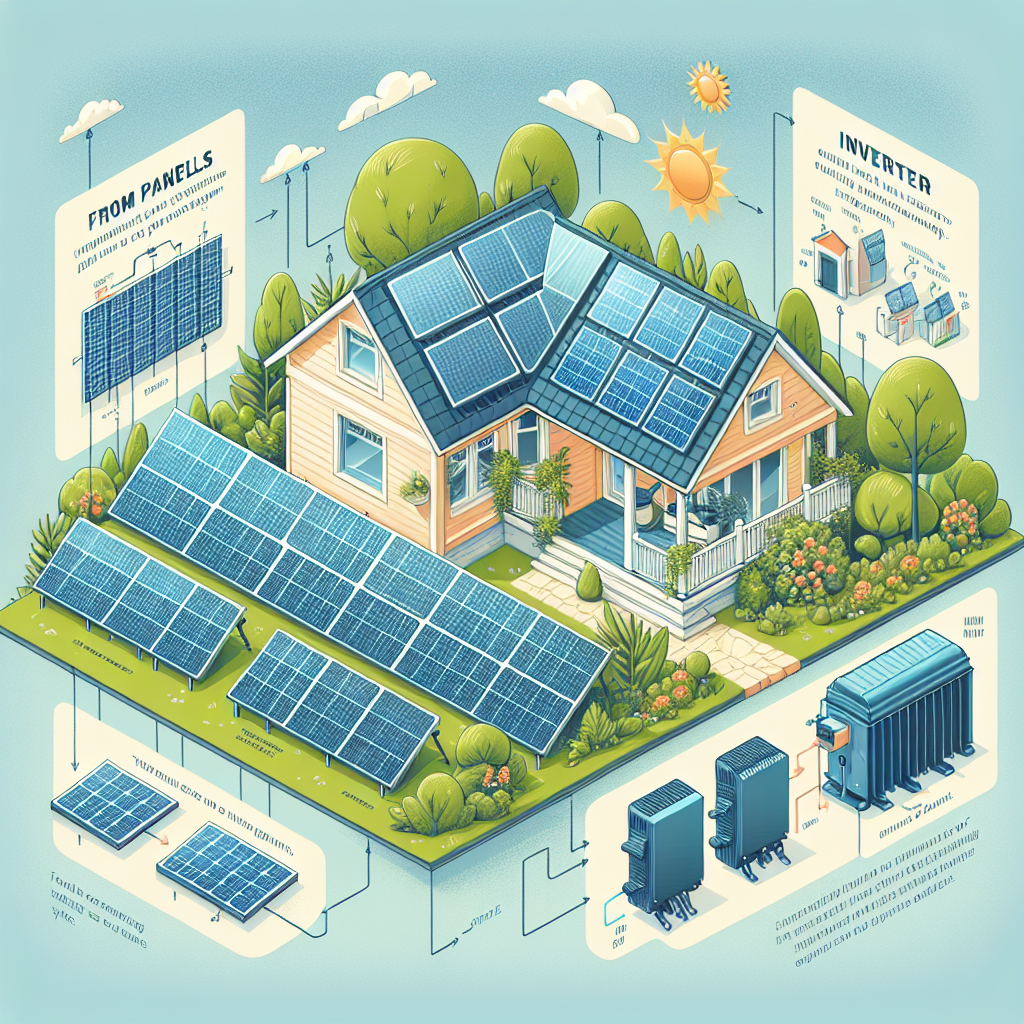The sun: a radiant powerhouse that has the potential to reduce electricity bills, promote sustainability, and power homes on a clean energy diet. As more homeowners consider solar energy, it’s essential to understand the components that make up a solar system. From solar panels to inverters, each part plays a crucial role in harnessing the sun’s energy. In this article, we’ll break down the major components of your home’s solar system so you can make informed decisions about your clean energy journey.
What is a Solar Power System?
A solar power system consists of various components designed to convert sunlight into electricity. Solar energy systems can be utilized in various configurations, from simple rooftop installations to complex grids that integrate battery storage. Regardless of the setup, understanding the key components is vital for any homeowner considering solar energy.
Solar Panels: Capturing Sunlight
The Heart of Your Solar System
At the center of any solar power system are the solar panels, which consist of numerous photovoltaic (PV) cells. These cells convert sunlight directly into electricity through the photovoltaic effect. When choosing solar panels, you’ll notice two main types: monocrystalline and polycrystalline.
-
Monocrystalline Panels: Made from single-crystal silicon, these panels are more efficient and have a longer lifespan. However, they typically come with a higher price tag.
- Polycrystalline Panels: Comprised of multiple silicon crystals, these panels are less expensive and slightly less efficient, making them a popular choice for budget-conscious homeowners.
Factors to Consider
When selecting solar panels, consider factors such as efficiency, warranty, and brand reputation. It’s important to choose reputable manufacturers that stand behind their products, ensuring you receive the best value for your investment.
Inverters: Converting Solar Energy
The Brain of the Operation
Once solar panels collect sunlight and produce direct current (DC) electricity, this energy needs to be converted into alternating current (AC) electricity, which is what your home appliances require. This is where inverters come into play.
-
String Inverters: These are the most common type, connecting several solar panels in a series. While they are cost-effective, their performance can be affected by shading or malfunctioning panels.
- Microinverters: Installed on each solar panel, microinverters maximize energy production by optimizing each panel’s output independently. They can be pricier but offer better efficiency and monitoring capabilities.
Why Inverter Choice Matters
An inverter’s efficiency and quality can dramatically affect your overall energy output. Sometimes, investing in a higher quality inverter upfront can result in significant savings and enhanced performance over the system’s lifetime.
Mounting Equipment: Securing Your Panels
Keeping It Steady
Installing solar panels requires stable mounting equipment, whether on rooftops or ground installations. Proper installation is essential not only for efficiency but also for safety and longevity. Two common types of mounting systems are:
-
Fixed Mounts: These are stationary and positioned at an optimal angle to capture the most sunlight.
- Trackers: These systems adjust to follow the sun throughout the day, increasing energy capture but usually at a higher cost.
Importance of Professional Installation
While DIY solar installations may be tempting, working with a professional installer ensures that your mounting system is perfectly aligned and securely attached. A poor installation can lead to inefficiencies, damage, and maintenance issues.
Batteries: Storing Solar Energy
Enhancing Self-Consumption
For homeowners aiming for energy independence, battery storage solutions are becoming increasingly popular. Solar batteries store excess solar energy produced during the day for use at night or during cloudy days, ensuring a steady power supply.
Choosing the Right Battery
When selecting a battery, consider your energy consumption habits, the size of your solar array, and the battery’s storage capacity, efficiency, and lifespan. Brands like Tesla and LG offer robust options but be sure to evaluate what best suits your needs.
Monitoring Systems: Keeping Track of Your Energy Production
Harnessing Data for Performance Optimization
A modern solar power system will include monitoring technology that allows homeowners to track the performance of their solar panels and inverters. Through a mobile app or online portal, homeowners gain insights into their energy production, consumption, and savings, ensuring they can optimize their system effectively.
Importance of Monitoring
Effective monitoring allows for proactive maintenance, helping to identify inefficiencies or potential issues early on. By keeping an eye on energy production, homeowners can maximize savings and ensure their system is functioning optimally.
Conclusion: Empowering Your Clean Energy Journey
Understanding the components of your home’s solar system is essential for making informed choices as you embark on your solar energy journey. From solar panels that capture sunlight to inverters that convert energy, each part plays a pivotal role in optimizing your home’s energy efficiency. By doing your research and consulting with professionals, you can ensure that your solar system meets your needs now and in the future. Embrace clean energy and take control of your energy bills today!


